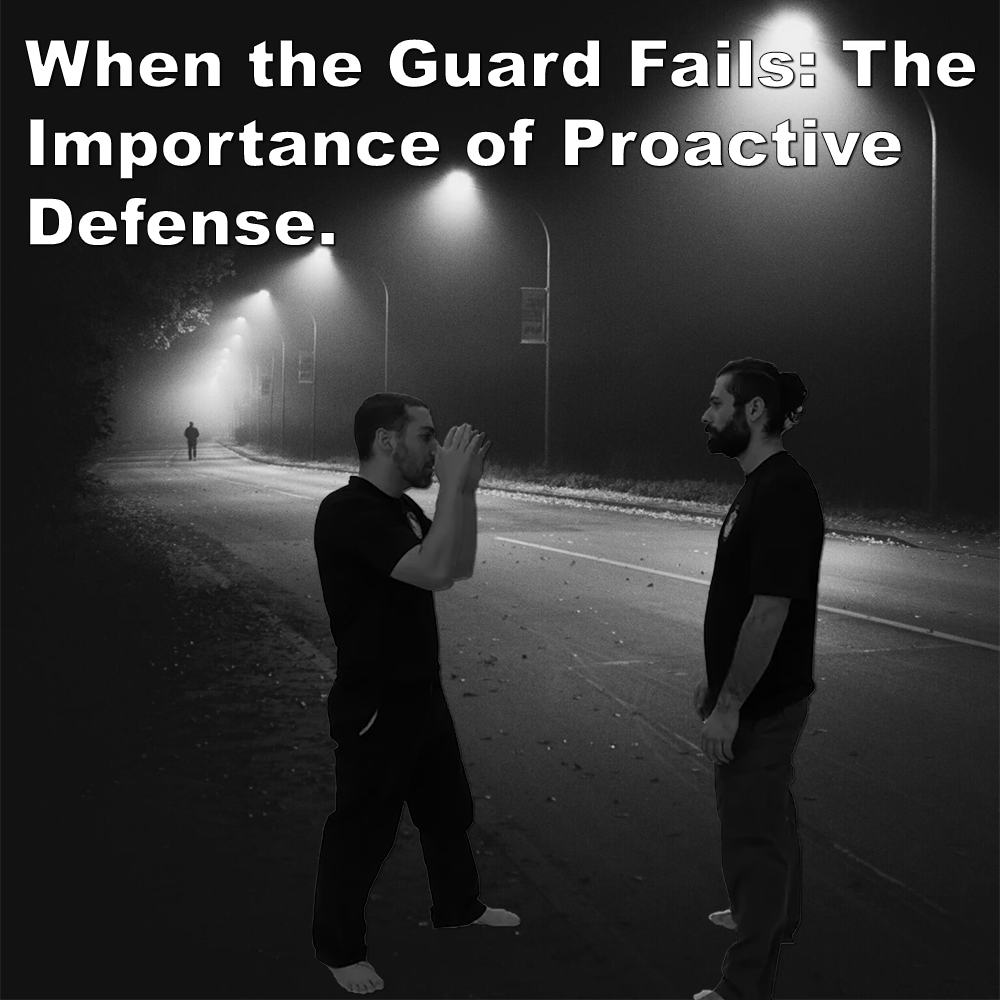
When the Guard Fails: The Importance of Proactive Defense.
Posted by ADAM CARTER on AUG 09, 2024

When the Guard Fails: The Importance of Proactive Defense.
(Approx 2 minute 15 second read)
I remember a little while ago when a student from a different style decided to join us. While going through several drills, he consistently placed his hands on either side of his head in a high guard position. He was used to being shouted at to ‘keep your hands up.’
In a sporting context, this is probably a good idea. But when confronted with the objective of controlling an opponent – grabbing, pulling, pushing, twisting, etc. – the hands in this position are fundamentally redundant when trying to initiate any control.
So, where should you hold your hands in order to effectively defend yourself? Should the hands be held high, as in boxing? Or should they be held lower, as in modern karate?
Guards vary depending upon what arm position is most advantageous in any given situation, environment, or set of rules. The guard most commonly attributed to modern karate is the most efficient for long-to-mid-range karateka vs. karateka sparring or competition; it’s not much use outside of the dojo environment or sporting arena.
For self-defense, the use of a guard is rarely needed if you endeavor to avoid a fight by escape, or by pre-empting an attack by hitting first and controlling the attacker.
When at close range, limb control is generally a more effective alternative to a formal guard; it’s better to make use of the arms in an active and positive way whenever possible. In Okinawan karate, we call this ‘meotode’ (husband and wife hands), using both hands together.
Moving our hands into a guard position is basically allowing the attacker another go. We want to dominate and control, not passively wait for an attack, as in the image.
If, for whatever reason, it all goes wrong, and the situation degenerates into a fight, then the use of a guard to cover may be necessary of course.
The guard is a tool – a fallback position if our initial strategies fail. It’s essential to remember that, while useful in specific circumstances, it should not be relied upon as the primary means of defense.
In a self-defense situation, it’s better to be proactive rather than reactive. It’s not a street fight or sport, remember. We want to disrupt the attacker’s rhythm and balance, leaving them unable to mount a further attack.
In traditional karate, there is a saying: ‘Karate ni sente nashi’ (There is no first attack in karate). This doesn’t mean we wait to be attacked before responding (as in the image), but rather that we strive to neutralize a threat before it’s fully under way.
Ultimately, while understanding and practicing various guard positions is important, we must recognize that it’s just one part of a broader strategy. It should never be the focus but rather a component that supports our overall approach to self-defense. By prioritizing pre-emptive action and control, we minimize the chances of finding ourselves in a position where a guard is necessary.
Finally, let me clarify. I’m not saying you shouldn’t learn a proper high guard. In certain scenarios it maybe essential, but self-defense?
So, if you find yourself relying on a guard, just remember – it’s probably because something went wrong in the first place.
AC
